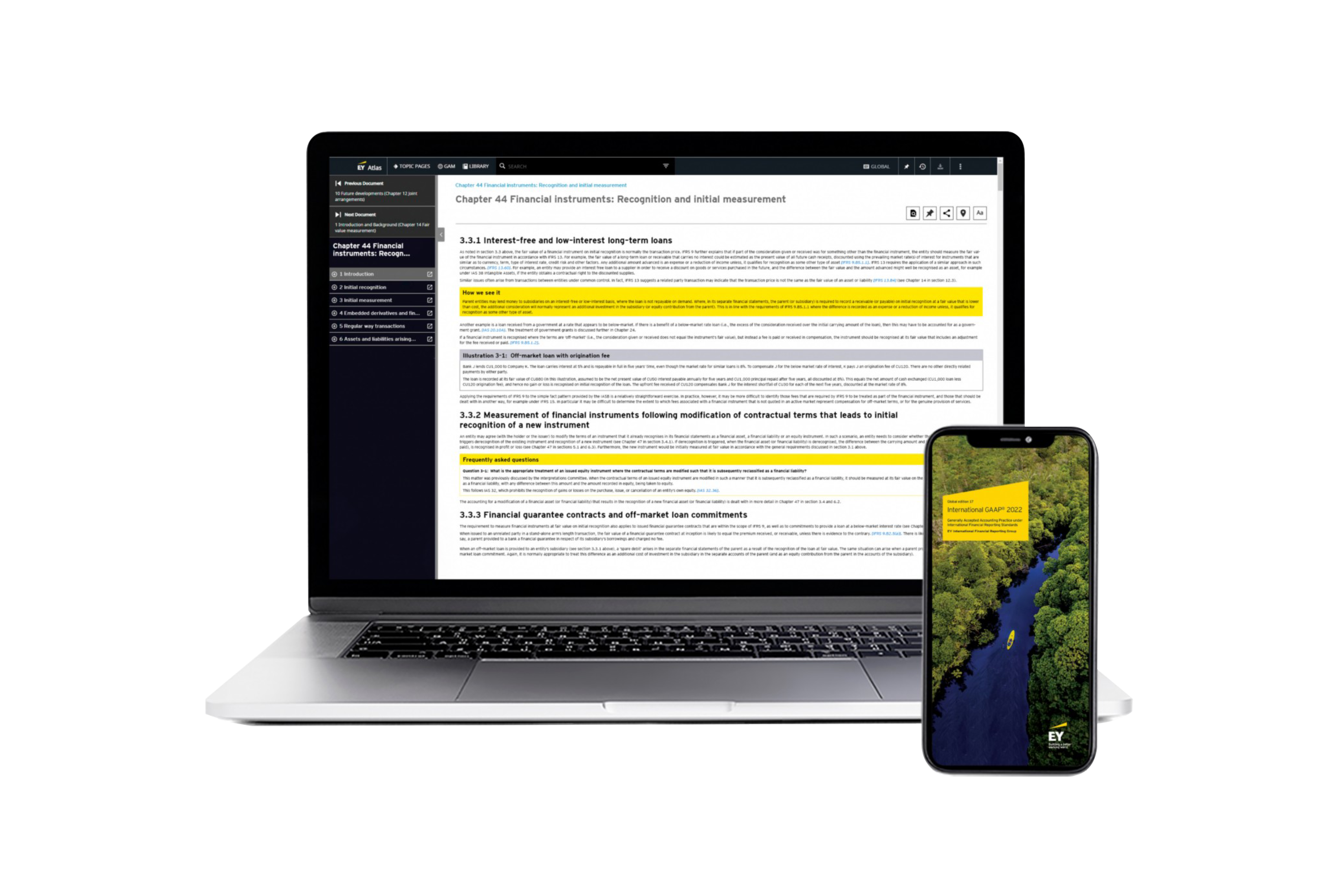EY refers to the global organization, and may refer to one or more, of the member firms of Ernst & Young Global Limited, each of which is a separate legal entity. Ernst & Young Global Limited, a UK company limited by guarantee, does not provide services to clients.
IFRS
EY’s Global CRS team examines the issues faced by companies in interpreting and applying International Financial Reporting Standards (IFRS).
Our latest thinking
IFRS 18 changes financial performance reporting
Companies need to reconsider the structure of statements of profit or loss in light of three new categories and subtotals required by IFRS 18. Learn more
What you need to know about ISSB's new research projects
ISSB to commence two sustainability-related research projects: biodiversity, ecosystems and ecosystem services (BEES); and human capital. Learn more.
When companies need to recognize a provision for a net-zero commitment
The requirement for companies to recognize net zero commitments in financial statements depends on facts and circumstances. Learn more.
Developments in global sustainability reporting from COP28
Key sustainability reporting developments from COP28 to help companies adopt new sustainability disclosure standards. Learn more
What companies need to consider for classification of liabilities
How IFRS classifies liabilities with covenants as current or non-current is changing in January 2024. Learn more
What to focus on in financial reporting this year-end
As companies prepare for the forthcoming reporting season, find out what key themes executives and boards need to focus on this year-end. Learn more
How companies could be affected by proposed amendments to IFRS 9
A proposed change to IFRS 9 requires settlement date accounting for derecognizing financial assets and liabilities. Learn more
ISSB issues IFRS S2 new climate-related disclosure standard
Companies need to disclose information about their climate-related risks and opportunities that is useful to investors. Learn more
ISSB publishes first ever global sustainability reporting standard
IFRS SI requires companies to identify, measure and disclose sustainability related risks and opportunities. Learn more
How stakeholders can help the ISSB prioritize its work plan
Stakeholders are invited to contribute to the ISSB’s agenda for developing sustainability-related reporting information for the next two years. Learn more
How OECD Pillar Two rules affect companies and their IFRS reporting
In the largest international tax reform in nearly a century, the new rules address growing global and digital economies. Learn more.
Where to focus as international sustainability standards are finalized
The ISSB will be redeliberating the first proposed sustainability disclosure standards based on the public comments received. Learn more.
IFRS 17 Insurance accounting changes in 2023
Insurers are underestimating the magnitude of the biggest insurance accounting change in decades.
Australia adopted IFRS in 2005 and the Australia Accounting Standards (AAS) applicable to for-profit private sector entities are consistent with IFRS, subject to those not publicly accountable that can follow Simplified Disclosures (SDS).
AAS, including Interpretations, are issued by the Australian Accounting Standards Board (AASB). They incorporate IFRSs (including Interpretations) issued by the IASB, with:
- the exception of some unique requirements for Australian not-for-profit private sector entities and public sector entities; and
- the addition of disclosures to address domestic regulatory or other issues.
Australia has a differential reporting framework for general purpose financial statements prepared in accordance with AAS. Currently this is:
- Tier 1 Australian Accounting Standards. This tier applies to for-profit private sector entities that are publicly accountable. Compliance ensures compliance with IFRS as issued by the IASB. Some public sector not-for-profit entities are also required to apply this tier, but cannot claim compliance with IFRS.
- Tier 2 Australian Accounting Standards – Simplified Disclosures. As of 1 July 2021, Tier 2 has changed to SDS. In addition, our ‘reporting entity concept’ has been removed, and consequently, for-profit private sector entities can no longer prepare special purpose financial statements if they are required to comply with AAS (subject to certain exceptions). This tier retains the recognition and measurement requirements of AAS but has reduced disclosures. Any entity that is not required to apply Tier 1, can choose to apply this tier (which most do) or Tier 1.
EY maintains a global IFRS network to ensure a consistent application of IFRS worldwide. We are represented in international as well as in Australian national bodies and can therefore contribute to informed discussions for improving financial reporting. In our Oceania IFRS Professional Practice team, we have specialists with extensive experience in IFRS application and sector expertise.
Australian Publications
In addition to our globally recognised IFRS commentary "EY International GAAP®", IFRS Outlook, IFRS Developments, Applying IFRS and IFRS Core Tools, we provide insights to the community through our communications on current Australian developments.
How EY can help
-
We merge traditional and innovative approaches, combined with a consistent methodology, to deliver quality audit services to you. Find out more.
Read more -
Through enhanced corporate reporting, EY can support finance teams to meet demands for high-quality enhanced financial and nonfinancial information.
Read more -
EY FAAS teams can help with many aspects of accounting for acquisitions, public offerings and related services. Find out more.
Read more

















